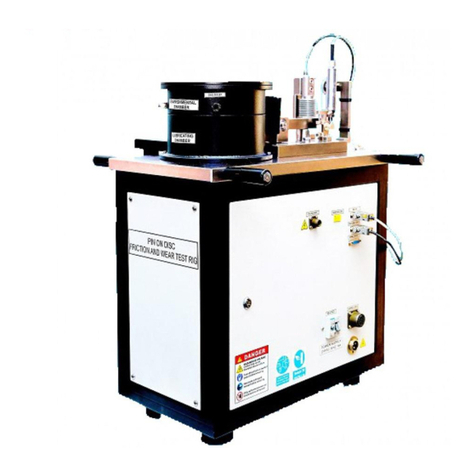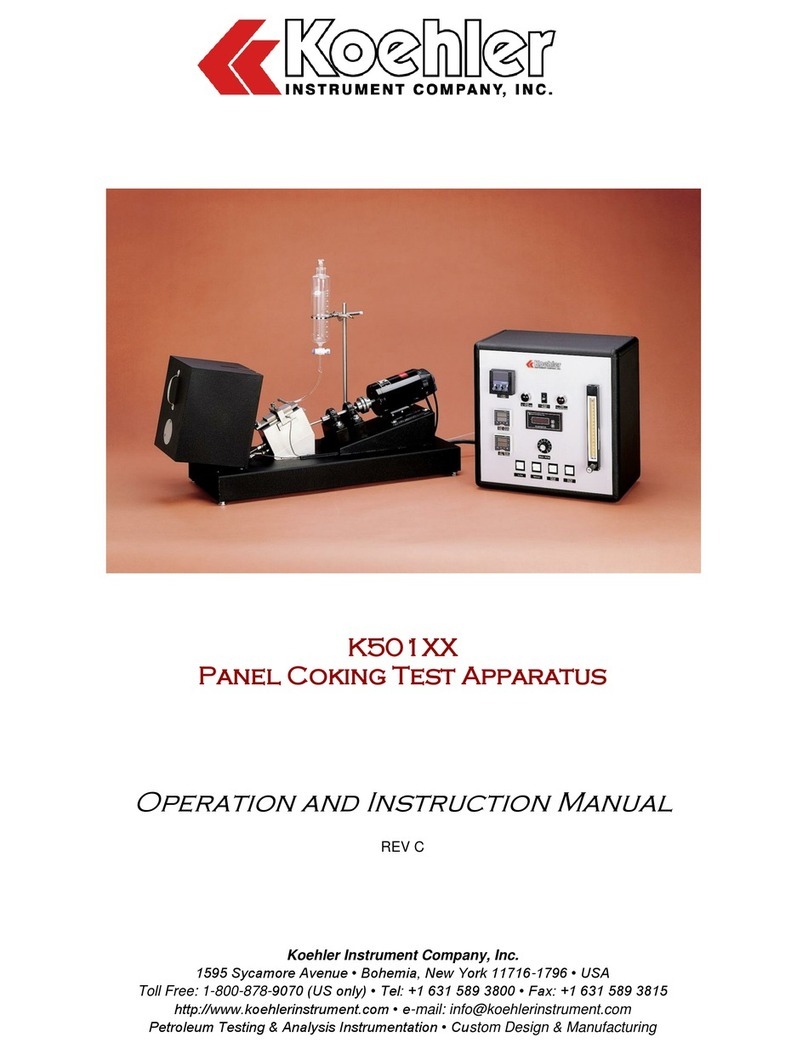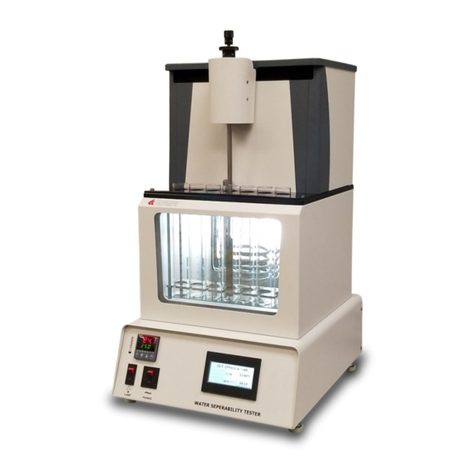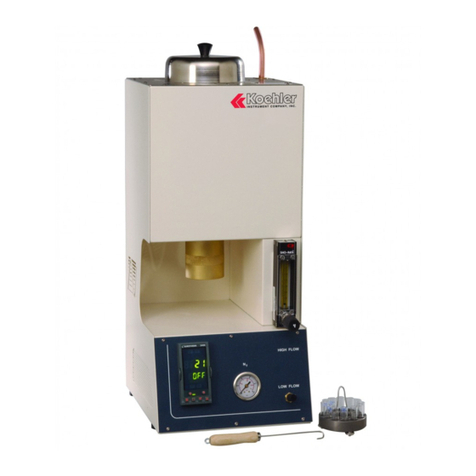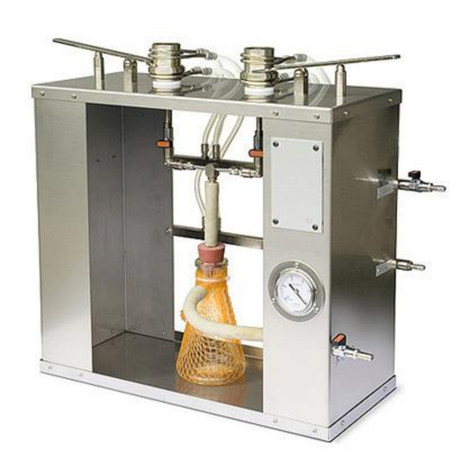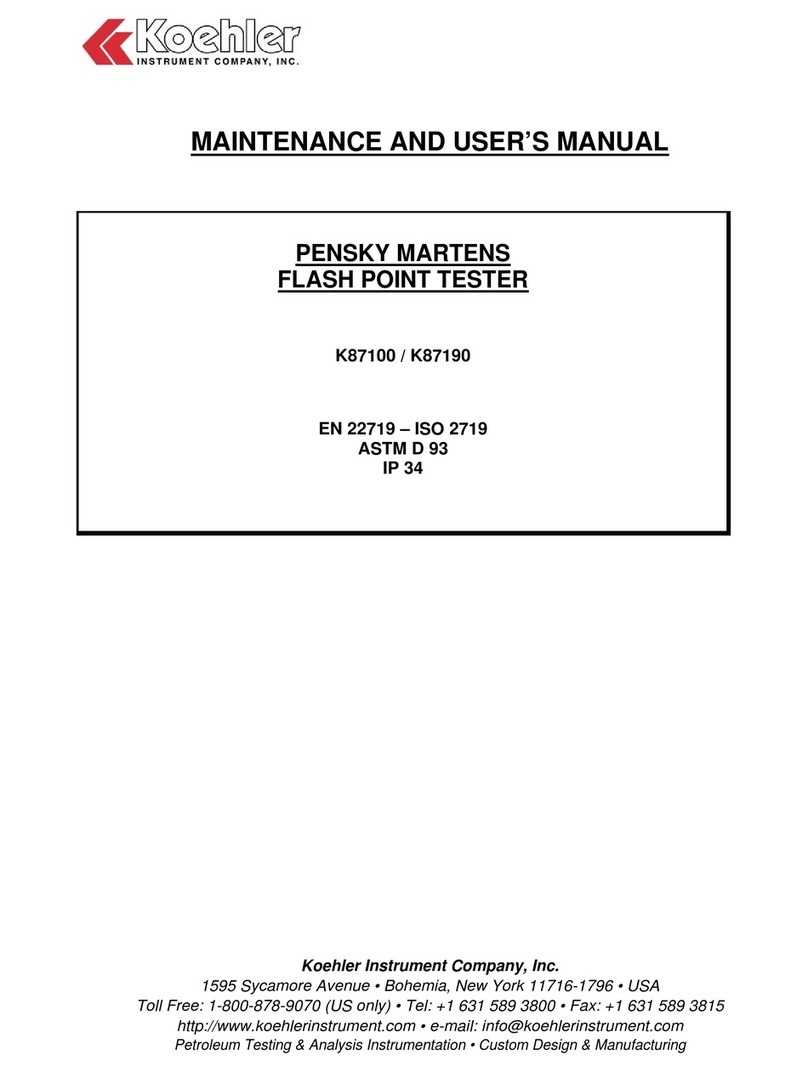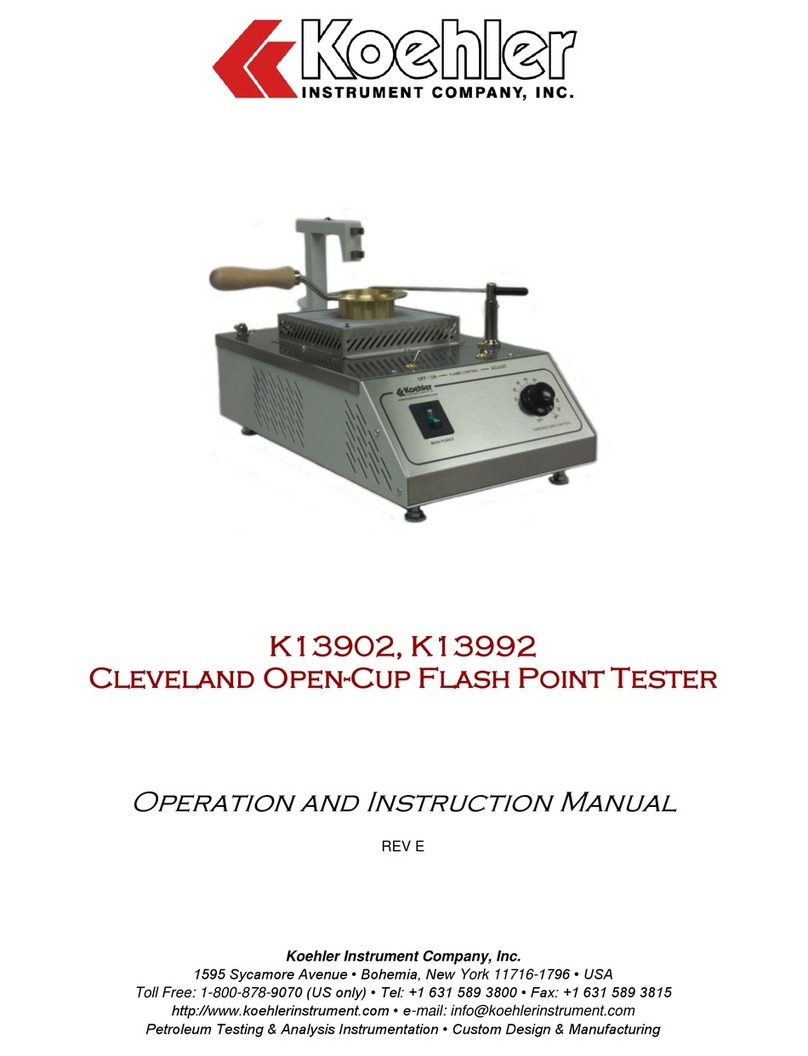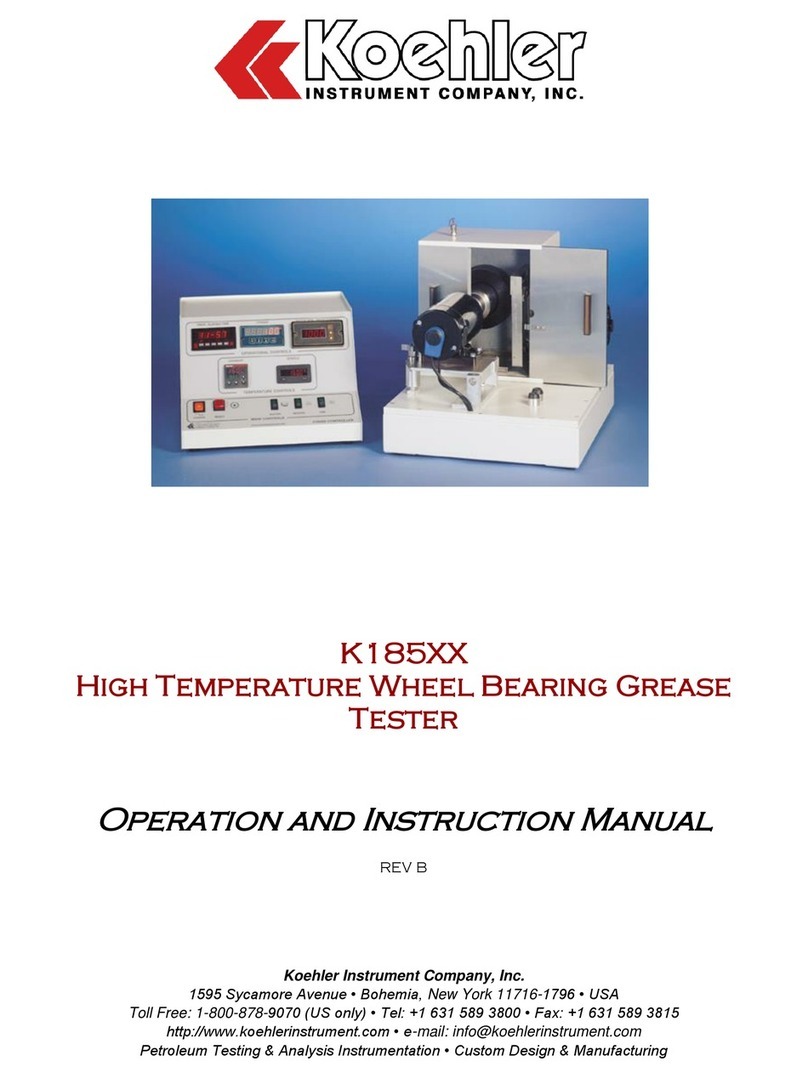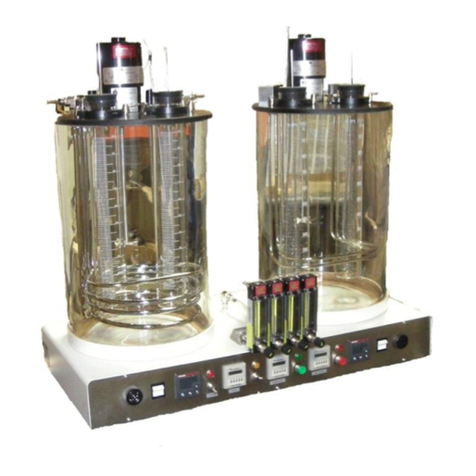K19201 Water Washout Tester
Operation and Instruction Manual
K19201-Manual -7-
WEEE Directive Compliance Statement
Background
The goal of the WEEE Directive is to encourage design of environment-friendly products that increase reuse,
recycling and other forms of recovery to reduce waste streams and applies to listed Electronic and Electrical
Equipment (EEE) and Koehler's equipment falls broadly into Appendix 1A; Section 9 Monitoring and Control
Equipment: Measuring, weighing or adjusting appliances for household or as laboratory equipment.
Any associated non-embedded equipment such as Lighting (Saybolt Color) and PCs/Printers also fall under
WEEE. If provided with an order these ancillary items must be WEEE compliant. For these and other reasons
(printer cartridges are regionalized) the equipment must be supplied through a third party supplier in Europe.
The WEEE Directive applies to electrical and electronic equipment falling under the categories set out in Annex
IA provided that the equipment concerned is not part of another type of equipment that does not fall within the
scope of this Directive. Annex IB contains a list of products which fall under the categories set out in Annex IA.
http://eur-lex.europa.eu/LexUriServ/LexUriServ.do?uri=OJ:L:2003:037:0024:0038:en:PDF
We do not qualify for any of the 10 exemption categories.
http://www.dpa-system.dk/en/WEEE/Products/Exemptions
Professional use
For equipment defined for ’professional use’ local authorities have no role to play. Producers and importers are
basically responsible for collection of WEEE recyclables from the professional user and for subsequent
management. A separate statement is given cataloging the items that require separation from the equipment
along with basic information on subsequent processing or recycling prior to disposal of the equipment.
http://www.dpa-system.dk/en/WEEE/Products/Private-or-professional-use
Responsibility for Registration and Annual Reporting:
Koehler will not sell directly to end users in the EU and so has no responsibility to register within each EU state
and to make annual reports. Koehler declares that this responsibility is born by the importer who is the first level
of the distribution chain and is subject to producer responsibility. We will communicate this in writing to our
distributor/importers in the EU stating they are responsible to satisfy WEEE registration and reporting
requirements in the EU states where they conduct sales activities.
It is illegal to market electrical and electronic equipment covered by producer responsibility without being
registered.
http://www.dpa-system.dk/en/WEEE/Producers/Whoissubjecttoproducerresponsibility
Product Design
Koehler's designs allow for complete disassembly to a modular level which usually allows for standard recycling.
A qualified refrigeration system technician must be consulted when disassembling and de-commissioning any
equipment with refrigeration systems.
Koehler's scientific testing equipment is robustly designed to function over a long service life and are typically
repaired many times over the course of years rather than being replaced. We believe that re-use and
refurbishment is the very best form of re-cycling.
All batteries must be readily removable not soldered in place.
Recycling instructions
In the event that replacement becomes necessary, we will include instructions, particularized to each instrument
that informs the customer of their recycling responsibilities and giving them guidance in doing this. All Koehler
equipment has been placed on the market since 13th August 2005 and so Koehler is defined as a "new WEEE
producer". As such we must provide information on refurbishment, treatment, and re-use.













